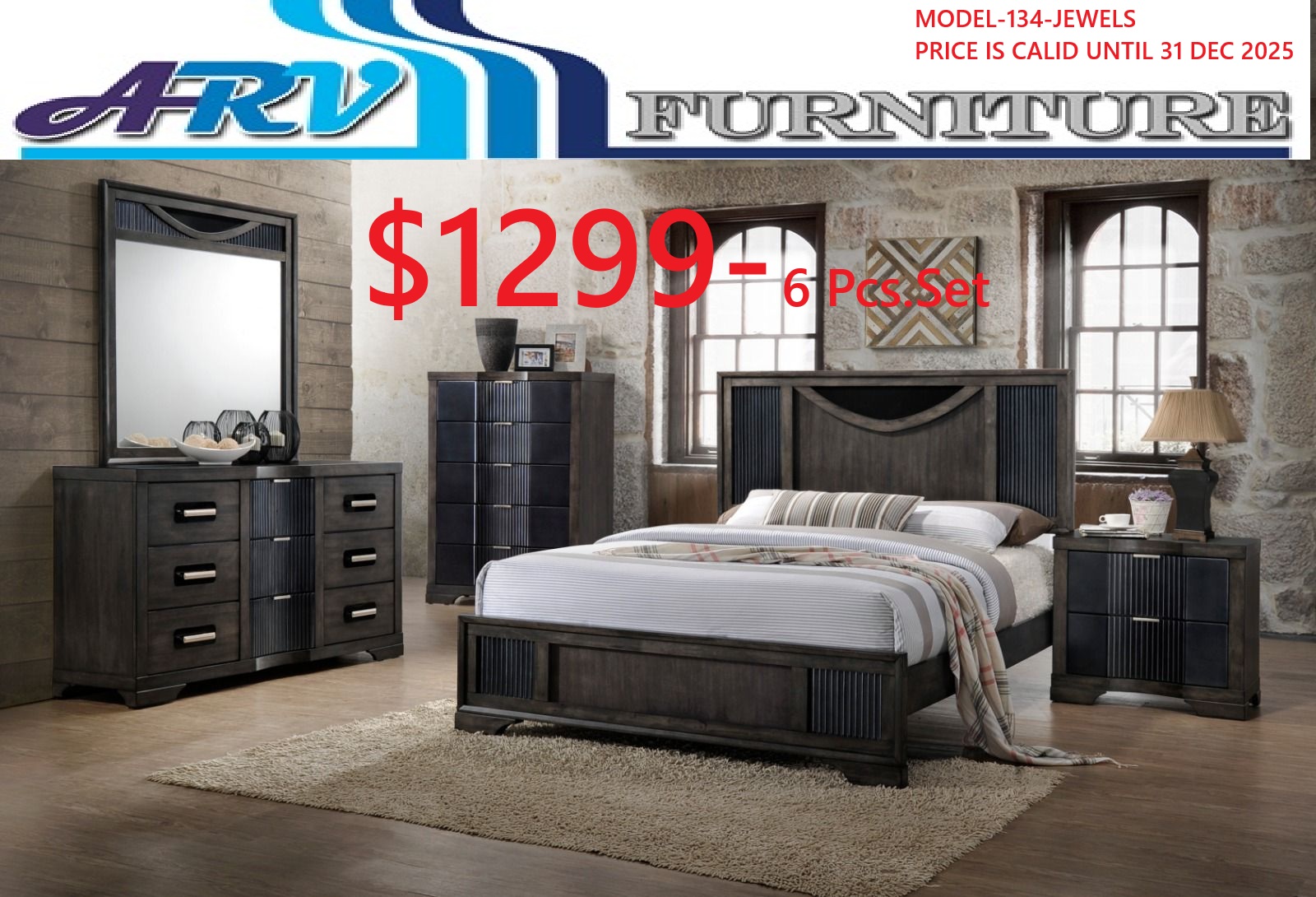
Measure Your Space First: Measure your room’s length, width, and ceiling height. Also measure doorways, windows, and any architectural features (like radiators or built-ins) so you know whether large furniture can actually be delivered/fit. Leave walking space: experts recommend about 24–30 in (60–75 cm) of clearance around the bed and other major pieces. Decide What Pieces You Actually Need. Do you want just a bed and nightstand, or a full 5- or 6-piece set? Think about your storage needs: How many clothes or linens do you have? Do you need extra drawers? Consider multi-functional furniture: e.g., beds with built-in storage drawers or secret compartments.
Define Your Style & Aesthetic: Figure out your preferred style (modern, rustic, traditional, minimalist, etc.). Choose finishes (wood tones, metal, painted surfaces) that coordinate with your existing décor (flooring, wall color). Don’t feel pressured to buy a fully matching set: mixing complementary pieces can give a more curated, personal look.
Prioritize Quality & Durability: Look for solid materials: solid wood, good-engineered wood, and durable metals are generally better than cheap plastics. Check the build quality: drawer glides, joints, and hardware.
Choose functional hardware: soft-close drawers, felt-lined drawers, and hidden compartments are all useful.
Consider Comfort & Function: Make sure the bed frame design supports the mattress well. Think about what you do in your bedroom: reading, working, storing clothes — and choose pieces accordingly.
If possible, try furniture in-store. Feel drawers, check how stable the bed is.
Set a Realistic Budget: Decide how much you’re willing to spend before you start shopping. Quality Rugs and Furniture. Buying a set often gives better value than buying individual pieces. But don’t over-invest in style at the cost of quality — good craftsmanship is worth paying for.
Logistics & Maintenance: Think about delivery and assembly: does the set need professional assembly, and is that something you want to pay for?
Maintenance: What kind of finish is on the furniture? How easy is it to clean or maintain?
Warranty & support: check if the manufacturer offers a warranty, and for how long.
Think Long-Term: Will your needs change? If you plan to move or change styles, consider flexibility in your furniture. Choose timeless pieces if you want longevity — avoid going too trendy if you want to get a few years out of it. Good-quality sets can last a long time, so it’s often worth investing in pieces that will stand up to everyday use.